As part of the Custom Lab’s efforts to increase visibility of and experimentation with new materials, we are pleased to share with you some of the products we have recently developed. As these are experimental products, availability may require longer lead times. Mike Townsend of GOLDEN Technical Support has reviewed these new products to give starting point suggestions for possible applications and uses. However, keep in mind these are only starting points, as we usually learn from artists that the products have many more uses than we initially envision. The GOLDEN Technical Support Department looks forward to your feedback regarding these materials.
Experimental Product Review by Mike Townsend:
Gels and Fibers Pastes
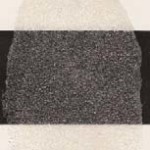 Glass Bead Gel – This translucent textural product blends glass bead solids into acrylic medium. The reflective quality of the inert barium titinate glass generates a luminous effect through the film. Underlying colors will affect the reflectance and look of this product. Iridescent Pearl and Silver create more light play with the Glass Bead Gel, especially when the gel is applied thinly, as when trying to achieve a uniform monolayer of the beads.
Glass Bead Gel – This translucent textural product blends glass bead solids into acrylic medium. The reflective quality of the inert barium titinate glass generates a luminous effect through the film. Underlying colors will affect the reflectance and look of this product. Iridescent Pearl and Silver create more light play with the Glass Bead Gel, especially when the gel is applied thinly, as when trying to achieve a uniform monolayer of the beads.
 Natural Fiber Paste – Containing a fibrous silica/aluminum compound which imparts a greenish brown hue, Natural Fiber Paste feels like lightly pressed handmade paper pulp. It is easy to apply and upon drying, develops into a highly textural surface not unlike a cold pressed watercolor paper. The textural organic surface accepts color washes and glazes readily.
Natural Fiber Paste – Containing a fibrous silica/aluminum compound which imparts a greenish brown hue, Natural Fiber Paste feels like lightly pressed handmade paper pulp. It is easy to apply and upon drying, develops into a highly textural surface not unlike a cold pressed watercolor paper. The textural organic surface accepts color washes and glazes readily.
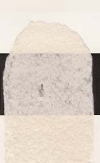 Opaque Fiber Paste – White fibers add strength, absorbency, texture and a unique woven feel to this product. Opacifying solids increase hiding power. It is readily tintable and can be spread on with a palette knife. The dried paper-like surface accepts drawing media and color washes for some interesting multi-media effects. Temporarily applied onto polyethylene plastic sheeting, Opaque Fiber Paste can be used to create paper-like “skins” to be used in mixed media and sculptural applications.
Opaque Fiber Paste – White fibers add strength, absorbency, texture and a unique woven feel to this product. Opacifying solids increase hiding power. It is readily tintable and can be spread on with a palette knife. The dried paper-like surface accepts drawing media and color washes for some interesting multi-media effects. Temporarily applied onto polyethylene plastic sheeting, Opaque Fiber Paste can be used to create paper-like “skins” to be used in mixed media and sculptural applications.
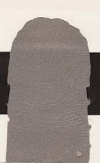 Ceramic Micro Sphere Gel – Unique warm gray micro spheres give this opaque gel a grainy, stone look. Dapples of its varied valued solids can be mixed with paint to yield interesting effects. The film hardness is not as solid as the GOLDEN Molding Paste, but is not as spongy as GOLDEN Light Molding Paste.
Ceramic Micro Sphere Gel – Unique warm gray micro spheres give this opaque gel a grainy, stone look. Dapples of its varied valued solids can be mixed with paint to yield interesting effects. The film hardness is not as solid as the GOLDEN Molding Paste, but is not as spongy as GOLDEN Light Molding Paste.
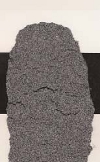 Granite Micro Granular Gel – Visually similar to the Ceramic Micro Sphere Gel, the darker Granite Micro Granular Gel feels grittier and more cement-like. Its strong textural film has a variety of multi-colored grays, producing a strikingly similar look to granite rock.
Granite Micro Granular Gel – Visually similar to the Ceramic Micro Sphere Gel, the darker Granite Micro Granular Gel feels grittier and more cement-like. Its strong textural film has a variety of multi-colored grays, producing a strikingly similar look to granite rock.
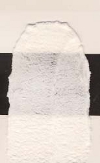 White Micro Granular Gel – This white version creates a surface which is bright, white, textural and somewhat translucent. It accepts color additions readily in a much different manner than adding a white paint. The roughness is similar to the feel of GOLDEN Coarse Pumice Gel, but without the light gray quality.
White Micro Granular Gel – This white version creates a surface which is bright, white, textural and somewhat translucent. It accepts color additions readily in a much different manner than adding a white paint. The roughness is similar to the feel of GOLDEN Coarse Pumice Gel, but without the light gray quality.
Special Effect Colors

Interference Fluid Colors – The next generation of Interference pigments have arrived, and this time the multiple tone color travel is even more dramatic. The Turquois- Violet, Gold- Green, and Violet- Green single pigment colors can be applied to give a soft transition over lighter colors and whites, or a more intense color travel by mixing with a dark color or applied over a dark background.
Interference Gels – The new Interference Fluid Colors have been used to create some pre-blended gels in a GOLDEN Regular Gel (Gloss) consistency, at a very low pigment load. This concentration allows more light waves to surround each pigment particle, enhancing the color travel aspect while retaining a translucent quality. Intermixed or underlying colors affect the intensity of the gel applied over them.
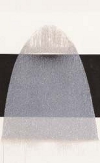 Fluid Iridescent Translucent Pearl – This new sparkly pearl has a visible particle size with a natural pearlescent quality, pigmented with coated glass flakes. Mix this unique pearl with a gloss gel medium to be able to disperse it sporadically or use as a base layer for translucent glaze colors.
Fluid Iridescent Translucent Pearl – This new sparkly pearl has a visible particle size with a natural pearlescent quality, pigmented with coated glass flakes. Mix this unique pearl with a gloss gel medium to be able to disperse it sporadically or use as a base layer for translucent glaze colors.
Heavy Body Colors
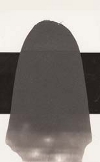 Slate Gray (PBlk 19 – CI# 77017) – Crushed slate powder produces a translucent gray color, of less green and a darker value than traditional Davy’s Gray quarried in England. It can be used to slightly dull a high chroma paint mixture or as a great underpainting color. Its weak nature tends to work well with transparent paints as it doesn’t overpower them like the more opaque Neutral Grays can.
Slate Gray (PBlk 19 – CI# 77017) – Crushed slate powder produces a translucent gray color, of less green and a darker value than traditional Davy’s Gray quarried in England. It can be used to slightly dull a high chroma paint mixture or as a great underpainting color. Its weak nature tends to work well with transparent paints as it doesn’t overpower them like the more opaque Neutral Grays can.
 Lapis Lazuli (PB 29 – CI# 77007) – Before Ultramarine Blue (chemically the same pigment) was ever synthesized, colormen would scour the earth to find clean veins of precious Lapis to grind into a permanent blue pigment for artists. Some artists believe there was something lost in translation, making Ultramarine Blue inferior to Lapis Lazuli. GOLDEN’s Lapis Lazuli – a deep translucent blue pigment – comes from a recently discovered vein in South America. Try it full strength for a texturally satin paint layer, or mix it with a favorite acrylic medium and create deep glazes.
Lapis Lazuli (PB 29 – CI# 77007) – Before Ultramarine Blue (chemically the same pigment) was ever synthesized, colormen would scour the earth to find clean veins of precious Lapis to grind into a permanent blue pigment for artists. Some artists believe there was something lost in translation, making Ultramarine Blue inferior to Lapis Lazuli. GOLDEN’s Lapis Lazuli – a deep translucent blue pigment – comes from a recently discovered vein in South America. Try it full strength for a texturally satin paint layer, or mix it with a favorite acrylic medium and create deep glazes.
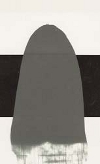 Chromium Oxide Dark (PG 17 – CI# 77288) – Creating middle greens normally requires either the manufacturer or the artist to create a blend. This single pigment provides an earthy, yet fairly clean opaque green to the artist. Landscape artists may find it particularly useful.
Chromium Oxide Dark (PG 17 – CI# 77288) – Creating middle greens normally requires either the manufacturer or the artist to create a blend. This single pigment provides an earthy, yet fairly clean opaque green to the artist. Landscape artists may find it particularly useful.
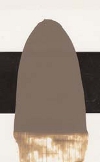 Brown Ochre (PY 43 – CI# 77492) – One of a select few natural pigments (goethite is a naturally occurring inorganic iron oxide) available. This muted, medium dark brown earth color is in the Umber family. It has excellent permanency and opacity.
Brown Ochre (PY 43 – CI# 77492) – One of a select few natural pigments (goethite is a naturally occurring inorganic iron oxide) available. This muted, medium dark brown earth color is in the Umber family. It has excellent permanency and opacity.
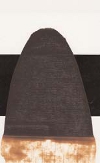 Transparent Brown Iron Oxide (PBr 6 – CI# 77492) – This color most closely resembles a dark Burnt Sienna, but breaks the rules of how an Earth Color is supposed to look and act. For artists who already embrace the Transparent Yellow and Red Iron Oxide colors, this is a must have. For those who have always found browns to be boring, this color should change that opinion.
Transparent Brown Iron Oxide (PBr 6 – CI# 77492) – This color most closely resembles a dark Burnt Sienna, but breaks the rules of how an Earth Color is supposed to look and act. For artists who already embrace the Transparent Yellow and Red Iron Oxide colors, this is a must have. For those who have always found browns to be boring, this color should change that opinion.
 Mars Orange (PR 101 – CI# 77491) – Coloristically, this opaque yellowishred pigment marries Mars Yellow and Red Oxide. It has a decisively Venetian Red aspect about it. For a mars (iron oxide) pigment, this Mars Orange has a very high chroma.
Mars Orange (PR 101 – CI# 77491) – Coloristically, this opaque yellowishred pigment marries Mars Yellow and Red Oxide. It has a decisively Venetian Red aspect about it. For a mars (iron oxide) pigment, this Mars Orange has a very high chroma.
 Mars Brown (PBr 6 – CI# 77492) – This dark chocolate brown pigment is deeper in value than either Raw or Burnt Umber. Like most Mars pigments, it has excellent opacity and the near black aspect makes Mars Brown a worthy color to use instead of a true black to lower value and chroma while mixing paints.
Mars Brown (PBr 6 – CI# 77492) – This dark chocolate brown pigment is deeper in value than either Raw or Burnt Umber. Like most Mars pigments, it has excellent opacity and the near black aspect makes Mars Brown a worthy color to use instead of a true black to lower value and chroma while mixing paints.
If you are interested in purchasing one or more of the products described above, please call GOLDEN Customer Service at 607-847-6154. Disclaimer: The above information is based on research and testing done by Golden Artist Colors, Inc., and is provided as a basis for understanding the potential uses of the products mentioned. Due to the numerous variables in methods, materials and conditions of producing art, Golden Artist Colors, Inc. cannot be sure the product will be right for you. Therefore, we urge product users to test each application to ensure all individual project requirements are met. While we believe the above information is accurate, WE MAKE NO EXPRESS OR IMPLIED WARRANTIES OF MERCHANTABILITY OR FITNESS FOR A PARTICULAR PURPOSE, and we shall in no event be liable for any damages (indirect, consequential, or otherwise) that may occur as a result of a product application.
About Golden Artist Colors, Inc.
View all posts by Golden Artist Colors, Inc. -->Subscribe
Subscribe to the newsletter today!
No related Post

1 thought on “GOLDEN Custom Lab”